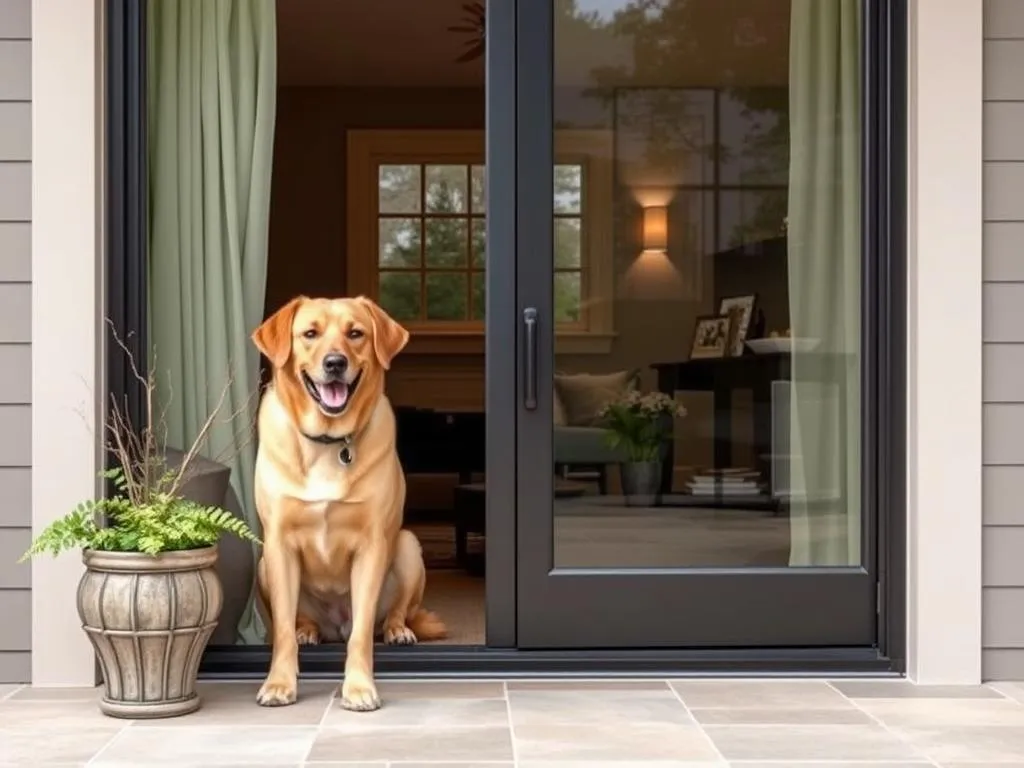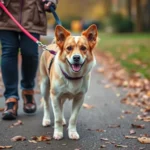
Introduction
Dog doors are a fantastic addition to any pet-friendly home, providing convenience and freedom for your furry friends. These openings allow dogs to enter and exit the house independently, promoting a more relaxed lifestyle for both pets and their owners. With a dog door, your pet can enjoy fresh air, sunshine, and outdoor playtime without needing constant supervision.
In modern homes, sliding glass doors represent a popular choice due to their aesthetic appeal and ability to maximize natural light. However, they also pose unique challenges when it comes to installing a dog door. Many pet owners find themselves wondering how to maintain the functionality of their sliding glass door while accommodating their pets’ needs. This article aims to guide you in selecting the best dog doors for sliding glass doors, highlighting essential features, benefits, and recommendations.
Factors to Consider When Choosing a Dog Door for Sliding Glass Doors
Size and Breed Considerations
Selecting the right size dog door is crucial for your pet’s comfort and safety. Measuring your dog is the first step in this process. You’ll want to measure your dog’s height and width, ideally at the shoulders, to ensure they can comfortably use the door.
- Small Breeds: For breeds like Chihuahuas and Pomeranians, a door with a flap size of 5-7 inches will suffice.
- Medium Breeds: Dogs like Beagles and Cocker Spaniels will need a flap size of 8-12 inches.
- Large Breeds: Breeds such as Labrador Retrievers may require a flap size of 13-15 inches.
Choosing the right size is essential to ensure that your dog feels comfortable and secure while using the door.
Material and Durability
Dog doors come in various materials, including plastic, aluminum, and vinyl. The material you choose will impact the durability and longevity of the door.
- Plastic: Lightweight and affordable, but may not withstand harsh weather conditions.
- Aluminum: Offers greater durability and is often more resistant to weathering, making it a popular choice for sliding glass doors.
- Vinyl: Provides good insulation and is durable as well.
Assess the climate in your area and your dog’s activity level to determine which material will best suit your needs.
Security Features
Home security is a top priority for many pet owners. When selecting a dog door, consider its locking mechanisms and safety features. Many modern options come equipped with locking panels that can be slid into place when the dog door is not in use, enhancing security.
Additionally, some dog doors feature advanced security systems, such as keypads or RFID tags, that allow only your pets to enter and exit, providing peace of mind when you’re not at home.
Energy Efficiency
An often-overlooked aspect of dog doors is their impact on energy efficiency. Poorly insulated doors can lead to drafts, which may increase your heating and cooling costs. Look for dog doors with energy-efficient designs, such as double-flap doors or those made with insulating materials, to help mitigate these concerns.
Installation Process
The installation process varies between dog door types. Some doors are designed for easy DIY installation, while others may require professional assistance. Consider your own comfort level with home improvement projects and the compatibility of the dog door with your existing sliding glass door system when making your choice.
Types of Dog Doors for Sliding Glass Doors
Insert Dog Doors
Insert dog doors are designed to fit within the track of your sliding glass door, allowing for a seamless integration into your home. They typically come with an adjustable height feature, making them versatile for various door sizes.
Pros:
– Easy to install
– Minimal disruption to existing door
Cons:
– May not be suitable for very large breeds
– Can be less secure than other options
Electronic Dog Doors
For tech-savvy pet owners, electronic dog doors offer convenience and security. These doors operate using an RFID tag or collar sensor that allows only your pet to enter and exit.
Pros:
– Enhanced security
– Prevents other animals from entering
– Programmable features for added convenience
Cons:
– Higher price point
– Requires batteries or electricity
Flap Dog Doors
Traditional flap dog doors are the most common type. They consist of a simple flap that swings open when your dog pushes against it.
Pros:
– Affordable
– Easy for pets to use
Cons:
– Less secure
– Can be prone to wear and tear
Retractable Dog Doors
Retractable dog doors are a modern solution that allows you to have a dog door when needed and retract it when not in use. This type is excellent for saving space and maintaining the aesthetics of your sliding glass door.
Pros:
– Space-saving
– Maintains home aesthetics
Cons:
– May be more expensive
– Mechanism may require maintenance over time
Top Recommendations for Dog Doors for Sliding Glass Doors
Product 1: PetSafe Freedom Aluminum Dog Door
- Features: Made from durable aluminum; features a double-flap for energy efficiency.
- Pros: Easy installation; suitable for various breeds; weather-resistant.
- Cons: Flap can be noisy in high winds.
- Price Range: $100 – $130.
Product 2: Endura Flap Double Flap Dog Door
- Features: Designed for extreme weather; comes with an insulated flap.
- Pros: Excellent energy efficiency; sturdy design; ideal for larger breeds.
- Cons: Higher price point.
- Price Range: $180 – $220.
Product 3: Ideal Pet Products Ruff-Weather Dog Door
- Features: Double-flap design; weather-resistant materials.
- Pros: Great for extreme climates; adjustable frame.
- Cons: Installation can be tricky for beginners.
- Price Range: $130 – $160.
Product 4: PetSafe Electronic SmartDoor
- Features: Operates using RFID technology; customizable access.
- Pros: Enhanced security; prevents unwanted animal entry.
- Cons: Requires batteries; higher cost.
- Price Range: $200 – $240.
Product 5: PawHut Automatic Sliding Dog Door
- Features: Automatic sensor activation; adjustable settings.
- Pros: Very convenient; keeps out unwanted pests.
- Cons: Installation may be complex; needs power source.
- Price Range: $150 – $180.
Product 6: Dog Mate Large Dog Door
- Features: Suitable for large breeds; weatherproof.
- Pros: Affordable; good insulation.
- Cons: Basic design; may not last as long as premium options.
- Price Range: $90 – $120.
Comparison Table
| Product Name | Size Range | Material | Security Type | Price Range |
|---|---|---|---|---|
| PetSafe Freedom Aluminum Dog Door | Small to Large | Aluminum | Manual Lock | $100 – $130 |
| Endura Flap Double Flap Dog Door | Large | Plastic | Manual Lock | $180 – $220 |
| Ideal Pet Products Ruff-Weather | Medium to Large | Plastic | Manual Lock | $130 – $160 |
| PetSafe Electronic SmartDoor | Small to Large | Plastic | RFID | $200 – $240 |
| PawHut Automatic Sliding Dog Door | Small to Large | Plastic | Sensor | $150 – $180 |
| Dog Mate Large Dog Door | Large | Plastic | Manual Lock | $90 – $120 |
Installation Tips for Dog Doors in Sliding Glass Doors
DIY Installation Steps
Installing a dog door in a sliding glass door can be a manageable DIY project if you have the right tools and follow the necessary steps.
- Gather Tools: You’ll need a measuring tape, screwdriver, level, and possibly a saw, depending on your door type.
- Measure and Mark: Measure your dog’s height and the door’s dimensions. Mark the area where the dog door will be installed.
- Cut the Opening: Carefully cut the opening using your saw, ensuring it aligns perfectly with the door frame.
- Install the Dog Door: Follow the manufacturer’s instructions to install the dog door securely.
- Test Functionality: Ensure the flap opens and closes smoothly and that your dog can use it comfortably.
When to Seek Professional Help
While many pet owners can install dog doors themselves, some situations may warrant professional assistance. If you have a custom sliding glass door or if the installation requires extensive modifications, it may be best to hire a professional.
Signs that you might need help include:
– Lack of confidence in your DIY skills.
– Complex door systems that require specialized knowledge.
– Concerns about voiding warranties or damaging your door.
Maintenance and Care for Dog Doors
Regular Cleaning Tips
Keeping your dog door clean will ensure it remains functional and extends its lifespan. Different materials may require different cleaning methods:
- Plastic: Use warm, soapy water and a soft cloth. Avoid abrasive cleaners that can scratch the surface.
- Aluminum: Wipe down with a damp cloth and mild detergent. Regularly check seals for wear.
Maintaining seals and flaps is crucial to preventing drafts and energy loss.
Troubleshooting Common Issues
Common problems with dog doors can usually be addressed with a little troubleshooting:
- Flaps Not Closing Properly: Ensure that the flap is clean and free of debris. Check for any obstructions that may prevent it from closing.
- Electronic Door Malfunctions: Check the batteries or power source. Reset the system if necessary.
Replacement and Repair
Over time, wear and tear may necessitate repairs or replacements. Signs that a door needs replacement include:
- Difficulty opening or closing.
- Cracks or damage to the flap.
- Persistent drafts or energy loss.
If repairs are needed, consider contacting the manufacturer for replacement parts to ensure compatibility.
Conclusion
Choosing the best dog doors for sliding glass doors is essential for enhancing the comfort and freedom of your pet while maintaining the aesthetic and security of your home. By considering factors such as size, material, security features, energy efficiency, and ease of installation, you can make an informed decision that benefits both you and your furry friend.
Investing in a dog door not only enhances your pet’s lifestyle but also adds convenience to your daily routine. Whether you opt for a traditional flap door or an advanced electronic model, the right choice can make a world of difference for you and your beloved pet.









